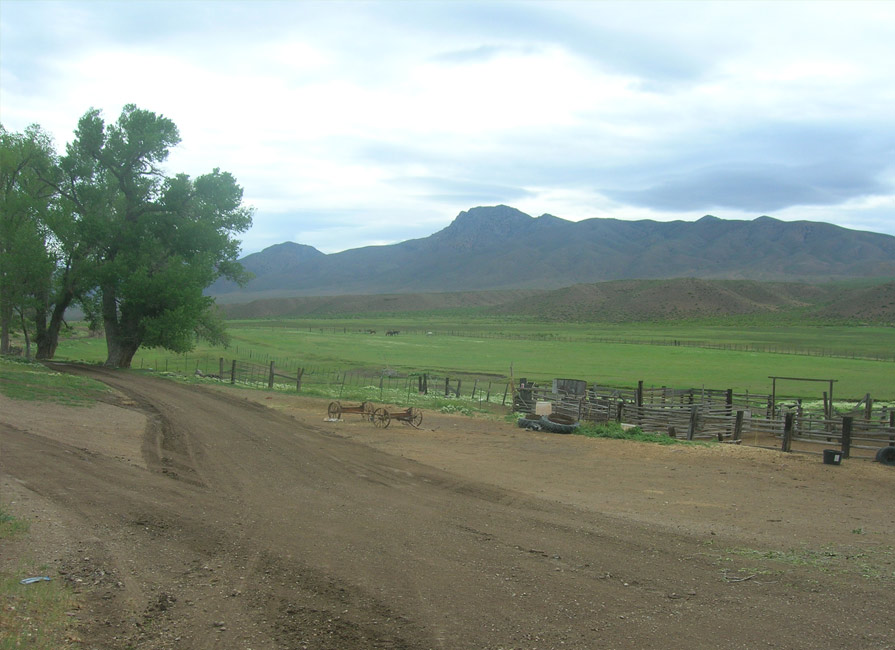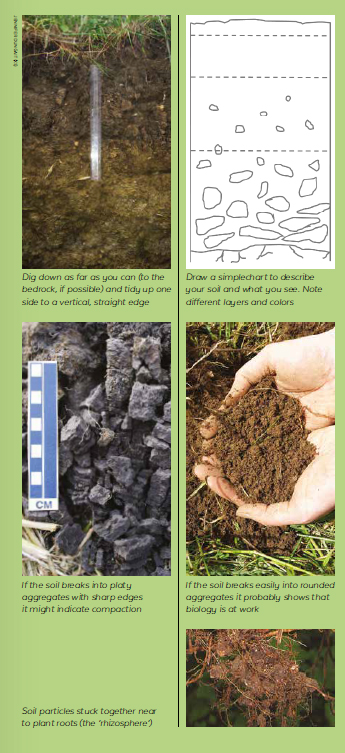One of the key attractions of our Certified Regenerative by AGW program is its practical…

The Beating Heart Of Sustainable Farming
By Jennifer Dungait, Ph.D.
This article was originally published in AGW’s Sustainable Farming magazine and can be downloaded as a PDF here.
The idea of soil health is a relatively new scientific concept in modern farming. It differs from the concept of soil quality, because it recognizes the key role of managing soil biology, as well as soil chemistry (such as pH and nutrients) and soil physics (the impact of tillage), to achieve more sustainable farming systems.
I am a soil biogeochemist and committed to research on soil organic matter in agricultural systems. I work side-by-side with farmers to improve soil organic matter and soil health by developing mutual understanding of how science (soil biology, chemistry and physics) can be used to improve the sustainability of farming. I work with farmers and scientists across the world to find out how popular indicators of soil health work at the microscopic level, and to use this science-based knowledge to develop cheap tools for all farmers to use so we can understand whether changes in management are improving the health of their soils—or harming it.
A farmer’s most useful tool? The shovel!
Over the last generation, the widespread adoption of big farm machinery and hands-off technology has widened the distance between many farmers in the West and their most precious resource and ally – the soil. Contrast this with the majority of farmers in the developing world who are literally face-to-face with their soils every day.
Of course, I am not advocating moving away from technology. But farmers across the planet need to use their legacy of knowledge and skills in partnership with new technologies so they can produce sufficient, safe and nutritious food that meets the dietary needs and food preferences for an active and healthy life for all, while at the same time nurturing Mother Nature. This must start with understanding and respecting the foundation of all agricultural production—the soil.
Get to know your soil
The best place to start understanding and improving your soil health is to develop a direct relationship with your soil. Take some time to go out into your fields and dig a soil pit to get to know the soils across your farm intimately.
First, dig down as far as you can (to the bedrock, if that is possible), and then tidy up one side so that it is vertical, straight edge. As you dig, think about the following points:
- Is it difficult to dig?
- Is it sandy, sticky, dry, crunchy, stony?
- Can you see different soil layers? What color are they? How deep are they? Are the boundaries between layers sharp or do they fade into each other?
- Does the soil stick together or fall apart? Feel the soil from each soil layer. If it is dry add some moisture. Smear it between your fingers. Is it stoney, gritty, soapy or sticky?
- How far do plant roots go down? Are there obvious layers of compaction that roots cannot get through?
- Are there any signs of life? What kind of bugs are there? Look for earthworms, spiders, beetles and other bugs, as well as fungal growth.
Next, draw a chart to describe your soil.
Get to grips with your dirt
Next, grab a handful of top soil. Does it smell good (like the air after heavy rain) or sour? When you squeeze it does it fall apart or stay together in a sticky lump? If it sticks together, break it apart. Does it break into platy aggregates with sharp edges? If so, this might indicate compaction. If it breaks easily into rounded aggregates, it probably shows that biology is at work, helping to give your soil good tilth. If it is dry and disintegrates into sand or dust this means that the biology is finding it tough to make soil aggregates because the soil is low in soil organic matter and/or limited by water. (See section below on aggregates as soil health indicators).
At Rothamsted Research, we have been working for decades on the relationship between soil organic matter and soil structure. We have proof from our very long-term field experiments (170 years old next year!) and working with farmers that there is a direct relationship between aggregate stability in water and the amount of soil organic matter the soil contains.
Research shows that, just like us, the bugs that live in the soil organize the world around them to make a comfortable home for themselves. You can think about soil aggregates as houses, where the bricks are soil particles (weathered bedrock) held together by mortar, which is soil organic matter. Organisms that live in the soil (fungi, bacteria, roots and bugs like earthworms) use the organic matter they eat to build their homes by actively producing goos and gels to stick soil particles together.
So, when thinking about how to improve the health and management of your soils, remember that bugs need a constant supply of soil organic matter as food to keep producing the necessary goos and gels that hold the soil particles together.
Simple tests to assess the health of your soil
Digging soil pits on your farm is the first step in learning about your soils and finding out what you can do to improve soil health, while comparing soil pits in different fields across your farm will give you an even better picture. You may find that fields you thought were similar are very different when you dig below the surface. But there are a number of simple tests you can do to get to know your soil even better.
Before you start any of these tests, note the weather and make sure you are comparing sites with the same soil types—from sandy loam through to clay. If you are not sure of your soil type, a number of simple online guides are available.
Try to choose sites that are flat and well away from trackways and other features like field boundaries and trees that could affect the general character of your soil. Finally, I would also advise testing the pH of the soil using a simple off-the-shelf kit or a reputable service, as this can affect the life in your soil.
You can do the following tests singly, but you will get to know your soil better the more you play with it!
Soil aggregate stability test
All you will need for this test is a selection of aggregates from soils across your farm where you think the soil organic matter is different, some transparent containers and some cold water.
First, once your soil is very dry (naturally during hot weather or you can dry it in your oven on a very low temperature for 24 hours), try squeezing it to see if it will break apart between your fingers. Next, choose some aggregates of a similar size (½ to 1 inch diameter) and drop them into the water. Watch them to see how quickly they disintegrate. If you time how long it takes to fall apart, you can revisit the same site after a change in management to see if it has made a difference to soil aggregate stability.
If your soil aggregate quickly fall apart in water (it ‘slakes’), it generally means it has less soil organic matter, and it will do the same when it rains, breaking up quickly before drying and creating structures that plant roots will struggle to penetrate. The longer soil takes to disintegrate in this test, the more soil organic matter it contains and the more resilient it is to erosion. In general, better soil aggregate stability (slower to break up) means better soil quality. If your aggregate has a lot of soil organic matter it may not break apart at all!
Water infiltration test
This test is based on the evidence that soil with good soil organic matter content holds onto water, while the good soil structure allows water to move deeper into the soil profile. This creates the right conditions for roots to grow deeper and creates a reservoir of water when the weather is dry. The water moves through the soil through pores that exist between soil particles and through larger earthworm burrows and root channels. Take a short piece of drainpipe and push it a couple of inches into the ground. Using a measuring jug or bucket, pour a known amount of water onto the soil and use a stopwatch to time how long it takes the water to disappear. Again, compare results with tests in different soils across your farm, and revisit the same site after a change in management to see if it has made a difference. Make sure you use the same pipe, inserted to the same depth and the same amount of water each time you do this test.
Soil color
This very simple test is based on the general observation that soil organic matter makes soil darker in color. The color of different soil types depends on their mineral contents, so it is difficult to compare between them. However, as a general rule, the surface soil will contain more soil organic matter than the subsoil and so should be darker in color. For this test, dig a soil pit and take a soil sample from the different soil layers. Air or oven dry them and compare their color.
Earthworms
Earthworms love soil organic matter and you always find them together in unglaciated landscapes. When you dig your soil pit, remove the soil onto a plastic sheet and gently break the soil apart. Count the earthworms (and any other visible soil animals) that you find in the different layers. While there is no “correct” number of earthworms, they are a useful indicator of soil organic matter and soil health. In general, the more earthworms per given area of soil, the higher the soil organic matter levels. Populations are highly variable in space and time, but the NRCS suggests 10 worms per square foot of soil is a reasonable population, although in grassland numbers can rise to 50 worms per square foot.
Professor Jennifer Dungait has worked in soil science for over 15 years. Contact her at [email protected]
DIG DEEPER
- The Comprehensive Assessment of Soil Health by Cornell University available FREE online at cals.cornell.edu/
- USDA Agricultural Research Service: usda.gov/
- Natural Resources Conservation Service: usda.gov (topic ‘soils’)


